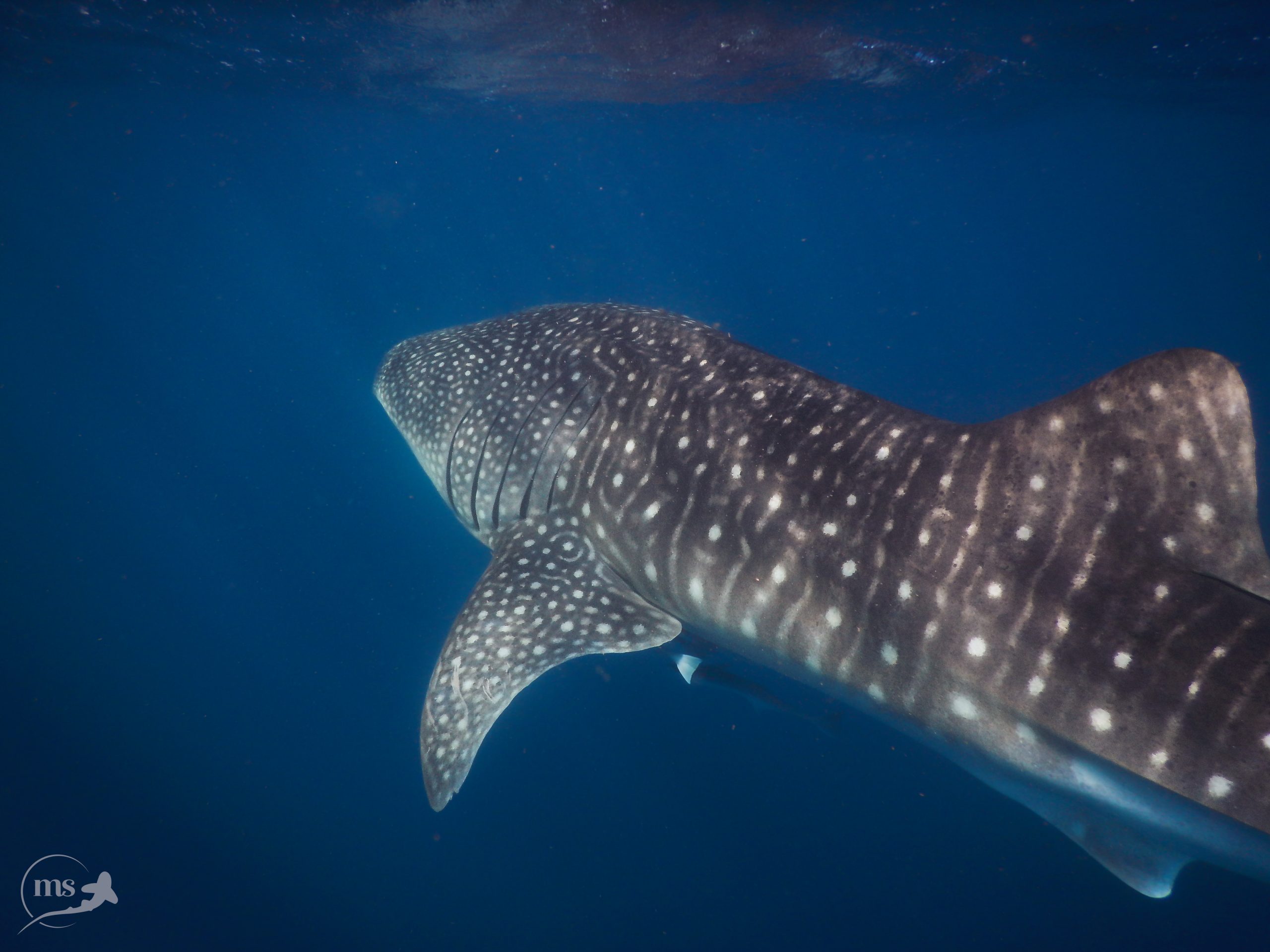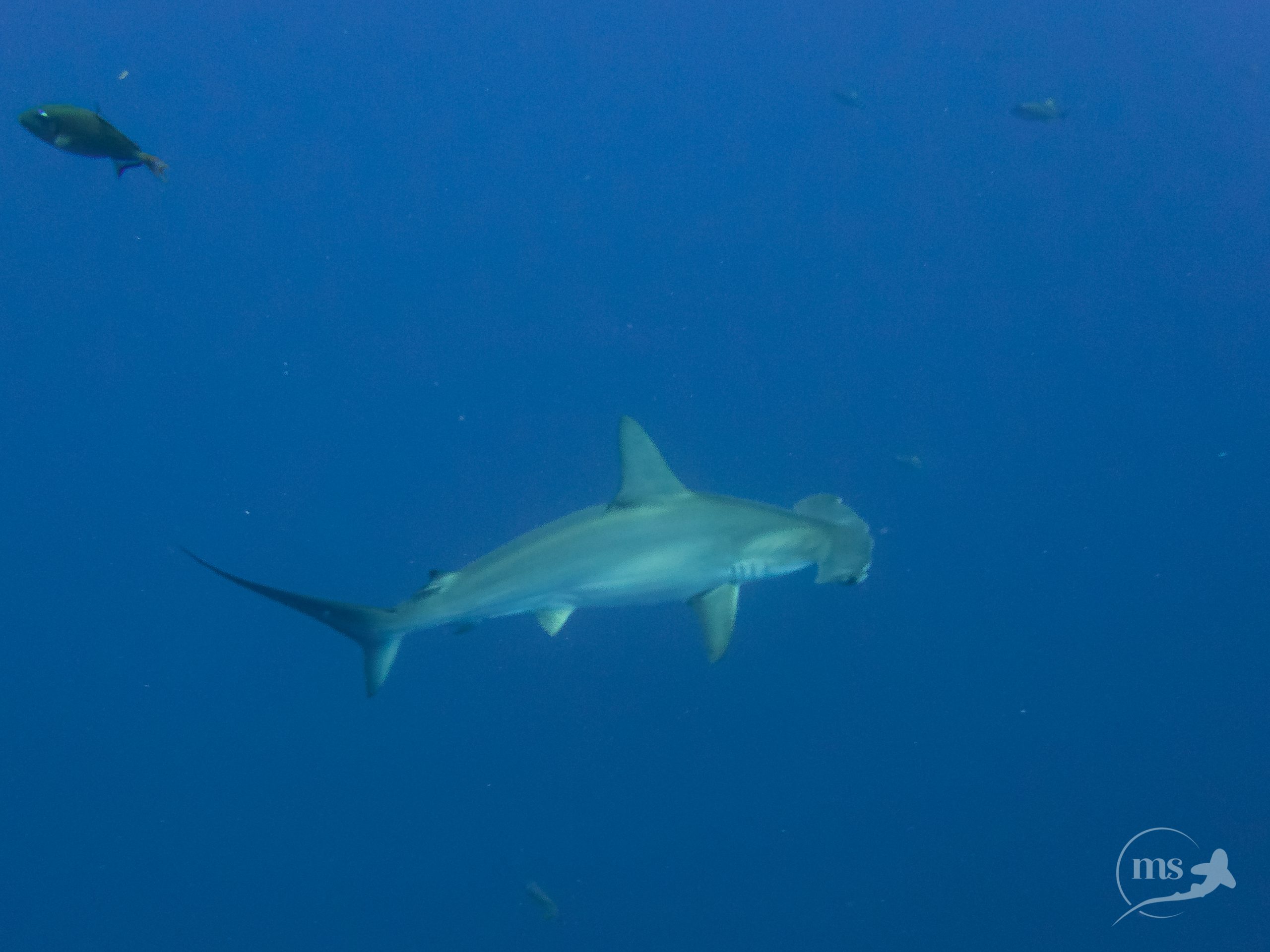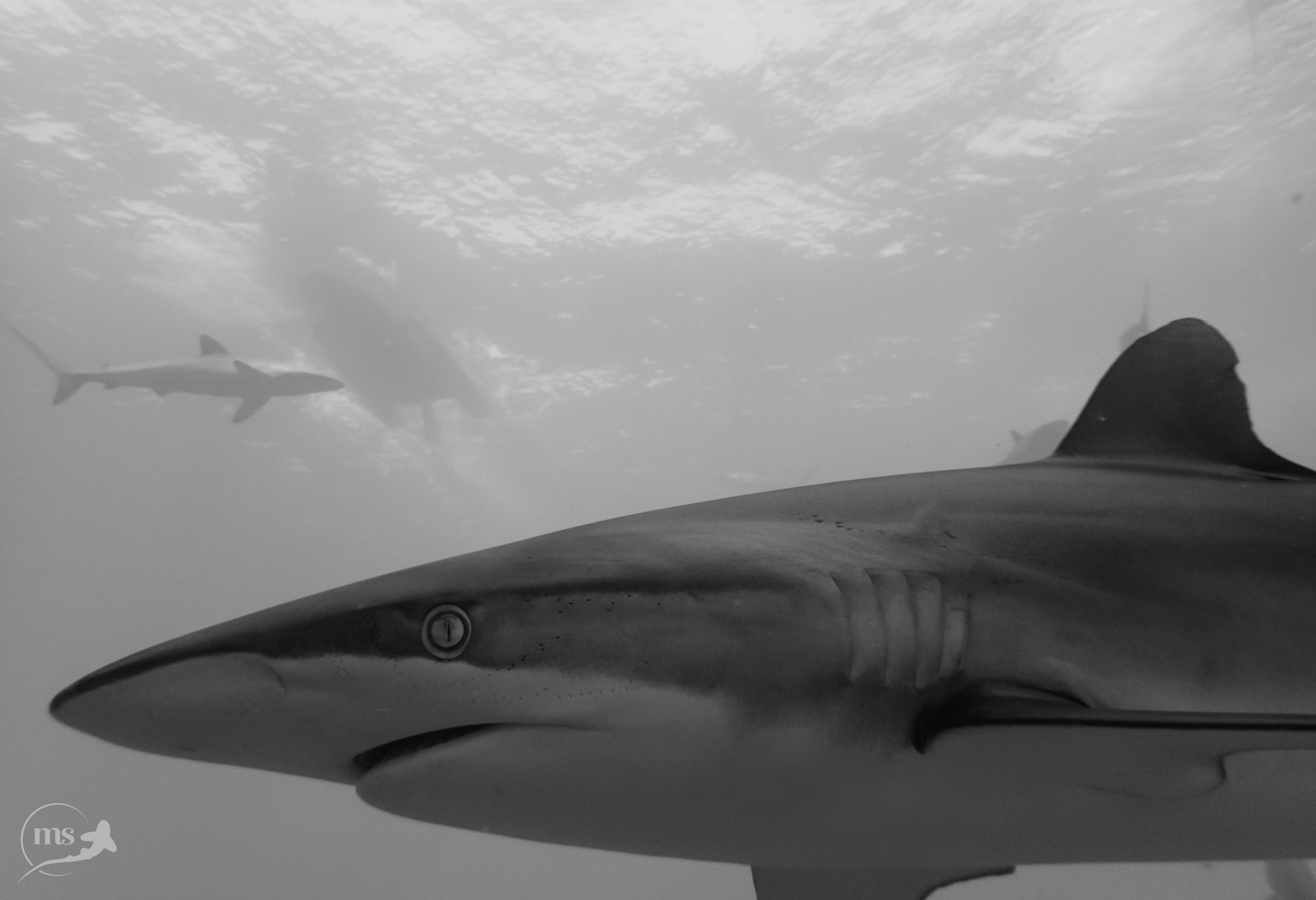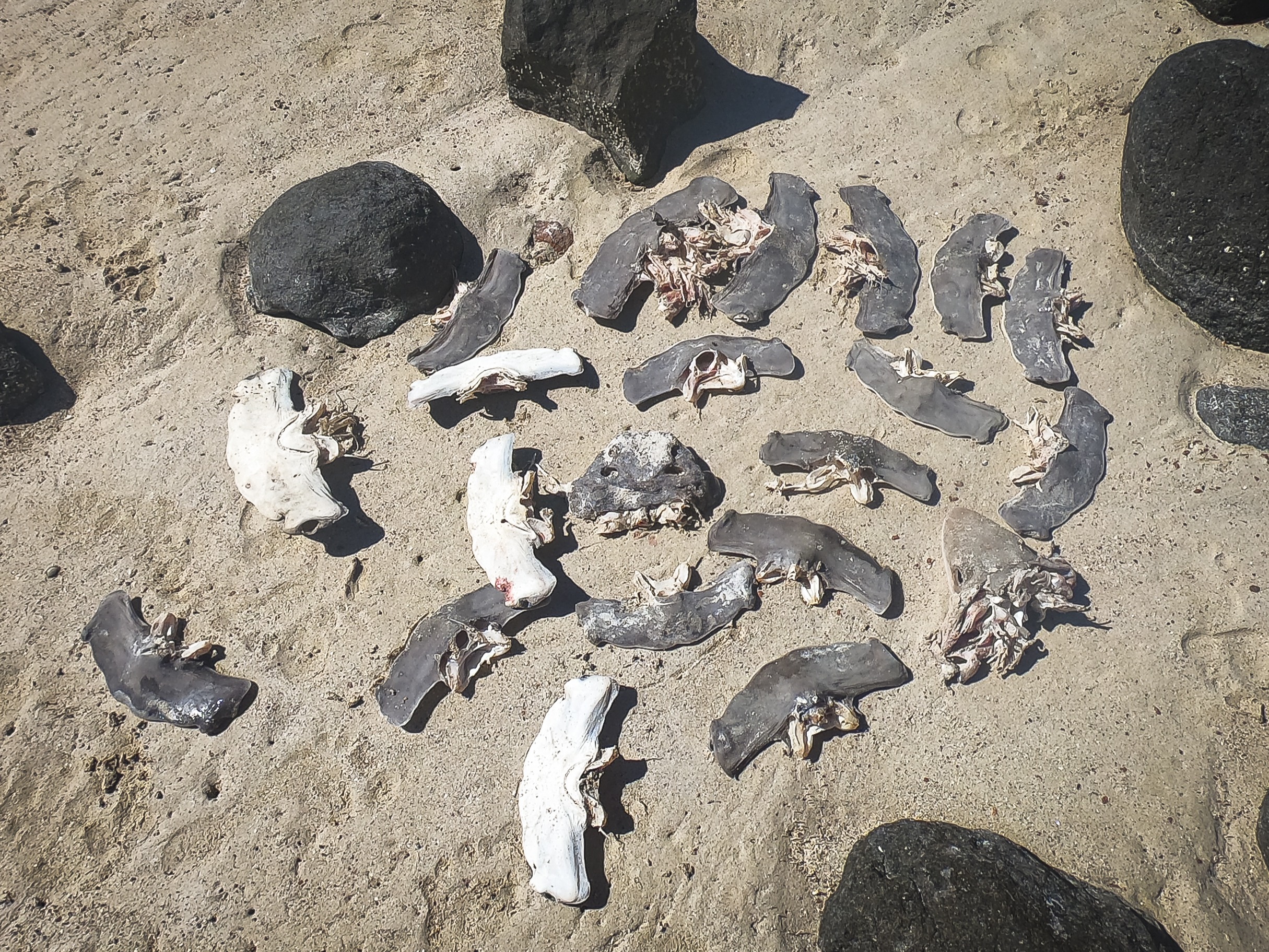Mexico presents a broad biodiversity of shark species, and more than half of them are found in the Mexican Pacific. There are around 62 species recorded in this region, which is approximately 55% of the total shark species in Mexico (of a total of 111 species). The highest shark species richness is found off the west coast of the Baja California Peninsula, and in the Gulf of California. More than 80% of the shark species in the Mexican Pacific can be found in the Baja California Peninsula waters. In this article, I will introduce you a bit to the sharks found in the Baja California Peninsula and some of their conservation issues.
Some shark species found in the Baja California Peninsula:
Whale sharks (Rhincodon typus)
Reaching up to 18 meters, they are the biggest fish in the ocean and one of the most iconic species in Baja, attracting visitors from all over the world to the Peninsula. Whale sharks feed on plankton and small fish that they filter while swimming in the water column. They have a beautiful pattern of lines and spots on their skin. This pattern is unique to each individual and is used for photo identification.
Whale sharks aggregate in different locations in the Sea of Cortez and migrate between them. The main sites where whale sharks are known to form aggregations are in La Paz, in Baja California Sur, and Bahía de los Ángeles, in Baja California.

In La Paz area, they gather from November to April to feed in the plankton-rich waters of the Bay. Snorkeling with these beautiful creatures is just a short boat ride from the city and is an unforgettable experience.
Want to learn more about whale sharks? You can read this blog entry or this article I wrote.
Bull sharks (Carcharhinus leucas)
Bull sharks are distinguished from other sharks by their wide bodies, giving them a stout appearance. They are found worldwide in warm, shallow waters along coasts and in rivers. In Baja California Sur they are another popular species, since you can see them in natural conditions scuba diving in Cabo Pulmo. The population of bull sharks here has thrived after the creation of the National Park. Now, big groups are found in this reserve, including massive pregnant females. Scuba diving between them is for sure an unforgettable experience. Staying relaxed close to the sand, breathing slowly, and seeing more and more sharks, becoming surrounded by these amazing animals is completely mindblowing. No doubt this one is on my top list of scuba diving experiences!
Hammerhead sharks
Hammerhead sharks are found worldwide in tropical and warm temperate seas. They are a small family with eight different species. From this family, Sphyrnidae, two species are the most common in the area: the smooth ( Sphyrna zygaena) and the scalloped hammerhead (Sphyrna lewini).
Some hammerhead species congregate and swim in large schools, a beautiful sight and a big attraction for scuba divers and underwater photographers. In the Gulf of California, these big aggregations of hammerhead sharks have been recorded in different locations, the dive site called El Bajo being one of them. El Bajo is an underwater seamount located eight miles northeast of La Paz, that used to be renowned for its scalloped hammerhead shark aggregations. Scuba divers from all over the world came to see this impressive spectacle. Sadly this has changed in the past years due to overfishing, and hammerhead aggregations are not a common sight anymore.

Great White Sharks (Carcharodon carcharias)
The largest known predatory fish species in the world, reaching 6 meters in length, is found worldwide, except in the polar seas. One of the biggest populations of Great White Sharks can be found offshore Ensenada, Baja California, on Guadalupe Island. Guadalupe was a popular place to see these sharks from cages underwater, but the activity has been recently closed by the authorities.
A nursery area has been found in Vizcaino Bay, but they also have been spotted in other areas, including the Sea of Cortez.
Silky sharks (Carcharhinus falciformis)
Silky sharks are the world’s most abundant pelagic shark species, they spread all over the world in temperate waters. They receive their name from the smooth and silky texture of their skin. Silkies are known to congregate around the southern part of the Baja Peninsula in the warm summer months for their mating season. During this time, silky sharks can be seen forming massive schools.

Other shark species found in the Baja California Peninsula
Mako sharks, the fastest sharks in the ocean, perform incredible migrations, passing through Baja California. Shortfin Mako, (Isurus oxyrinchus) is the most common of the two species. Blue sharks (Prionace glauca) are found usually in the winter and are a common sight in Cabo shark snorkeling tours from December to April. Tiger sharks (Galeocerdo cuvier), lemon sharks (Negaprion brevirostris), blacktip sharks (Carcharhinus limbatus), and thresher sharks (Alopias vulpinus)are other shark species that can be found in Baja, though shark sightings are sadly pretty rare. We are lucky to have seen thresher sharks a few times jumping out of the water in our tours in La Ventana.
Conservation of different sharks in the Baja California Peninsula
This high diversity of species is fragile though: shark fishing has considerably decreased shark numbers in recent years. In the Mexican Pacific shark fishing has always been very important, with a long history and tradition. But the fishing pressure increased a few years ago, with the demand for shark fins from Asia and the big fishing fleets.
The Sea of Cortez has seen shark populations plummeting in the last two decades. Research indicates that nearly 30% of the Mexican Pacific shark species are classified as Threatened, and another 30% have the designation of Data Deficient.

To address this worrying issue, conservation efforts to protect them are starting to be put in place, but there is still not much protection for sharks despite the situation. Only three shark species are protected under the NOM-059, prohibiting their fishing in Mexican waters: White Shark, Whale Shark, and Basking Shark. Some other conservation measures established are a complete ban on shark finning in all fisheries, banning nets from catching sharks by the oceanic industrial fleet since 2009, and prohibition of shark fishing in some critical habitats along the coasts, including nursery areas, and turtle nesting beaches. There are also seasonal fishing bans.
Hopefully, we can embark on a path in which sharks get more protection, as they are crucial for the rich marine ecosystem that surrounds the Baja California Peninsula. If we succeed, we might see a future in which sharks are again swimming like they used to in these waters
If you want to learn more about what has happened to sharks in the area, you can see this documentary that illustrates more about the issues of sharks in Baja California, Sharks of the Sea of Cortés: A Lost Treasure? https://www.pelagioskakunja.org/film

No responses yet